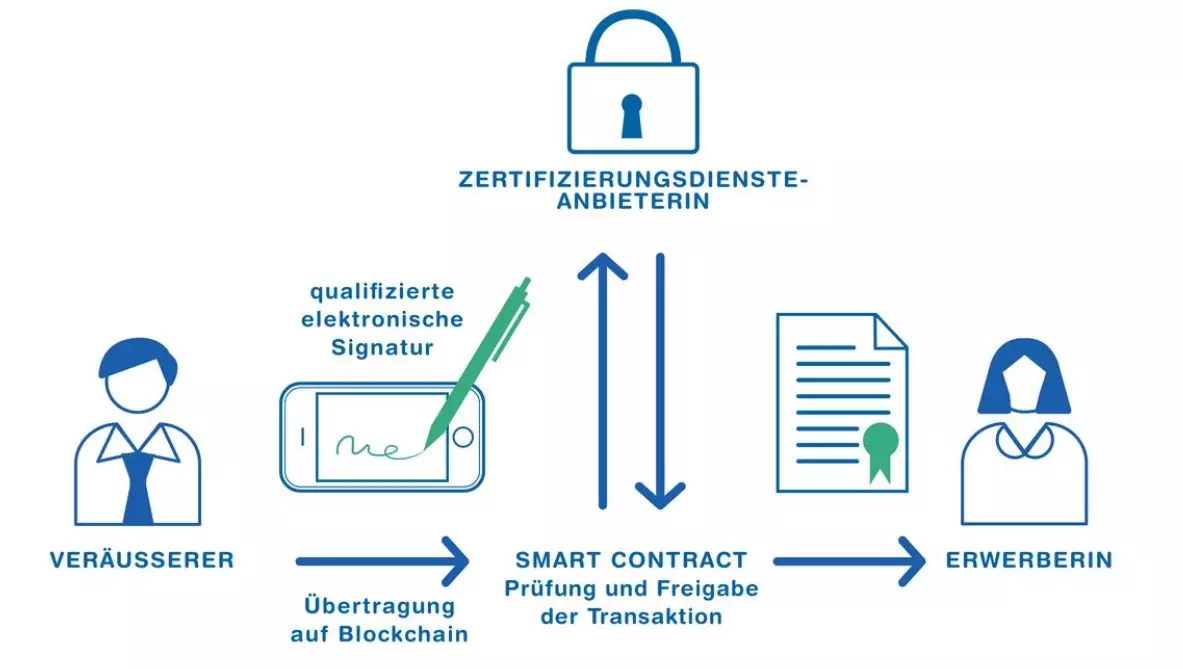Blockchain Transaction Signaling as a Service
ZHAW and Swisscom have collaborated to develop the first application of entering a qualified electronic signature on the blockchain, enabling valid contracts to be concluded.
First-ever qualified electronic signature for blockchain
Blockchain technology is changing how goods are exchanged on the Internet – by allowing transactions to be processed transparently and independent of a centralised organisation (e.g. a bank). Up to now, however, entering a qualified electronic signature on the blockchain was impossible. Yet, only a qualified electronic signature can replace a physical signature for contracts and other legal transactions that generally have to be concluded in writing and signed by all parties. The written form serves as legal proof, prevents impulsive decisions and provides information for the counterparty.

Smart contract with signatures
In the past, the inability to submit a valid written signature posed an obstacle to many parties who wished to use blockchain technology to conclude legal agreements. Now, an interdisciplinary team made up of lawyers and engineers at ZHAW have collaborated with Swisscom to develop the prototype for a «smart contract» that satisfies the requirement of the written form. Smart contracts are computer programs that execute the exchange and transfer of assets. The application developed at ZHAW runs on the Ethereum blockchain and has an interface linking it to Swisscom’s service for signatures, where qualified electronic signatures can be appended to blockchain transactions in compliance with legal requirements. After the signature has been authenticated, the requested action – for instance, transferring an asset or concluding a contract – is processed on the blockchain. According to ZHAW expert Harald Bärtschi, the technology eliminates the legal uncertainties surrounding such transactions. «This is especially important in Switzerland, because we require the written form in claims and other legal transactions. Until now, it was often unclear whether transactions on the blockchain were legally valid.»
Easy to integrate into blockchain systems
With the new smart contract, parties can conclude valid contracts and transfer assets on the blockchain. «This solution combines the advantages of the de-centralised blockchain infrastructure with the security and reliability of a certified signature,» says Bärtschi. The solution can be fairly easily integrated into existing blockchain systems such as Ethereum, Hyperledger or Corda. The technology supports signatures in accordance with Switzerland’s requirements as well as with the eIDAS regulation of the European Union. «This opens up a number of possible international applications,» says Peter Amrhyn from Swisscom.